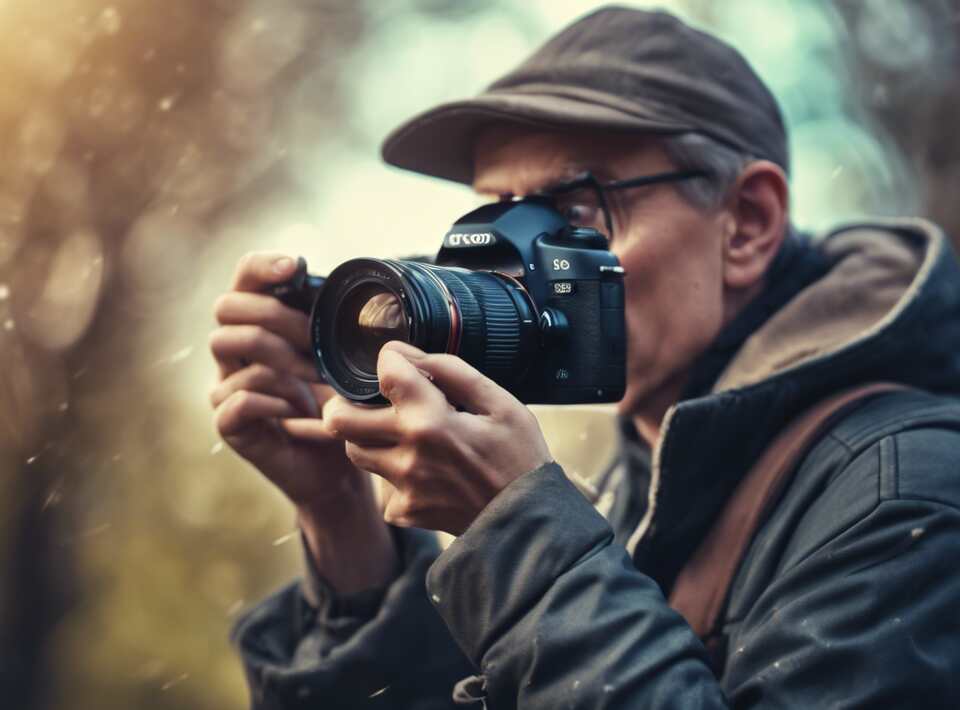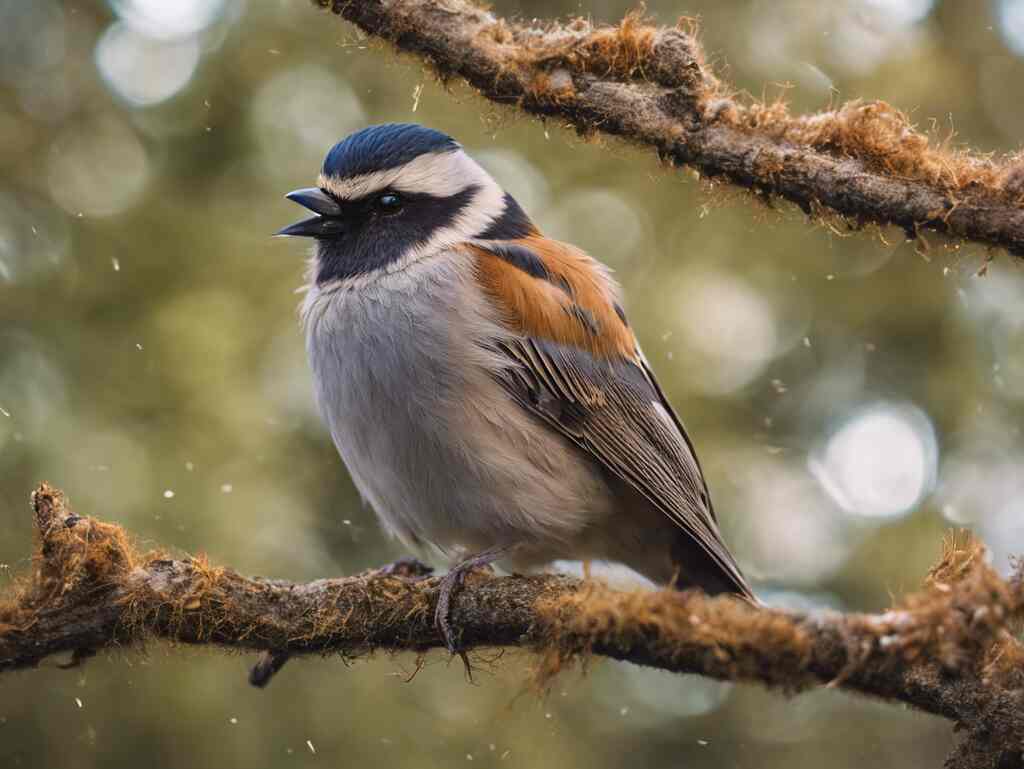
As a passionate birder, having the right camera equipment is essential to capturing the beauty and intricacy of birds in their natural habitats. The search for the best superzoom camera for birding can be a daunting task, but with the right information, you can unlock a whole new world of photographic possibilities.
Table of Contents [show]
The Best Superzoom Cameras for Birding
Zoom, Clarity, and Versatility: Key Superzoom Camera Essentials
When it comes to birding photography, a superzoom camera offers the perfect balance of powerful optical zoom, high image quality, and versatility. These cameras are designed to provide an extended zoom range, allowing you to capture stunning close-ups of birds from a distance without disturbing their natural behavior. Factors like image sensor size, lens quality, and advanced autofocus systems are all critical considerations when choosing the best superzoom camera for birding.
Nikon COOLPIX P1000: The Superzoom Powerhouse
Description:
Discover the ultimate tool for birding enthusiasts – the Nikon P1000. With its bold 125x optical zoom, this camera brings the avian world to your fingertips, allowing you to capture intricate details from incredible distances. Boasting a 16-megapixel CMOS sensor and Nikon’s renowned image processing technology, the P1000 ensures exceptional image quality with impressive clarity and detail, even in challenging lighting conditions. Its advanced autofocus system swiftly locks onto subjects, ensuring you never miss a moment, while effective image stabilization minimizes camera shake for crisp, blur-free shots of birds in motion or at rest.
Pros:
- Unrivaled Zoom Capability: Reach new heights in birding with the P1000’s 125x optical zoom.
- Exceptional Image Quality: Capture stunning details with the 16-megapixel CMOS sensor and Nikon’s image processing technology.
- Swift Autofocus: Never miss a moment with the advanced autofocus system.
- Effective Image Stabilization: Minimize camera shake for crisp, blur-free images.
- Versatile Shooting Modes: From manual to automatic modes, the P1000 offers flexibility for photographers of all levels.
Cons:
- Bulkier Design: The P1000’s powerful zoom comes with a slightly bulkier build.
- Limited Low-Light Performance: While capable in most lighting conditions, low-light performance may not match larger DSLR cameras.
Verdict:
In conclusion, the Nikon P1000 stands as the superzoom powerhouse for birding, offering unparalleled zoom capability, exceptional image quality, and advanced features tailored to birding enthusiasts. Despite its bulkier design and some limitations in low-light conditions, the P1000 remains a top choice for capturing breathtaking moments in the avian world. If you’re ready to elevate your birding experience and bring your feathered subjects closer than ever before, the Nikon P1000 is the camera to trust. Grab it on Amazon now at today’s best deal!
Sony Cyber-Shot RX10 IV: Exceptional Image Quality
Description:
Introducing the Sony RX10 IV, a versatile powerhouse designed to excel in the world of birding photography. With its impressive 24-600mm equivalent zoom range, this camera offers unparalleled versatility, allowing you to capture birds in a variety of settings with ease. Equipped with a 20.1-megapixel stacked CMOS sensor and BIONZ X image processor, the RX10 IV delivers exceptional image quality characterized by rich colors, low noise, and impressive dynamic range. Its advanced autofocus system, featuring 315 phase-detection AF points and real-time tracking, ensures that your feathered subjects remain crisply in focus, even amidst rapid movements.
Pros:
- Versatile Zoom Range: From wide-angle shots to close-up captures, the 24-600mm equivalent zoom range accommodates various birding scenarios.
- Outstanding Image Quality: Enjoy rich colors, low noise, and excellent dynamic range thanks to the 20.1-megapixel stacked CMOS sensor and BIONZ X image processor.
- Advanced Autofocus System: Keep up with fast-moving birds with precision using the RX10 IV’s 315 phase-detection AF points and real-time tracking.
- High-Speed Performance: Capture fleeting moments with ease, thanks to the RX10 IV’s impressive continuous shooting speed of up to 24 frames per second.
- Robust Build Quality: Designed for durability, the RX10 IV boasts a weather-sealed magnesium alloy body, ensuring reliability in various outdoor conditions.
Cons:
- Limited Maximum Aperture: Despite its impressive zoom range, the RX10 IV’s maximum aperture of f/4 throughout the zoom range may restrict low-light performance compared to cameras with wider apertures.
- Price: The premium features of the RX10 IV come with a higher price tag compared to some other superzoom cameras on the market.
Verdict:
In summary, the Sony RX10 IV emerges as a formidable contender in the realm of superzoom cameras for birding, offering exceptional image quality, versatility, and advanced features tailored to the needs of birding enthusiasts. While its limited maximum aperture and premium pricing may pose considerations for some users, the RX10 IV’s impressive performance, robust build quality, and ease of use make it a worthy investment for those seeking to elevate their birding photography experience. If you prioritize exceptional image quality and versatility in your birding endeavors, the Sony RX10 IV is sure to exceed your expectations. Grab it on Amazon now at today’s best deal!
Panasonic LUMIX FZ1000 II: A Balanced Approach
Description: Enter the realm of balanced superzoom photography with the Panasonic FZ1000 II, a camera designed to cater to the needs of discerning birding enthusiasts. Sporting a 16-megapixel 1-inch sensor and a versatile 16x optical zoom lens, the FZ1000 II offers a well-rounded focal length range ideal for capturing birds in various settings. Whether you’re observing birds in flight or perched amidst lush foliage, this camera provides the flexibility to frame your shots with precision.
Equipped with 4K video capabilities and advanced image stabilization, the FZ1000 II empowers you to not only capture stunning stills but also immersive video footage of your avian encounters. Its user-friendly interface and customizable controls ensure a seamless and intuitive birding photography experience, allowing you to focus on capturing the beauty of nature without distraction.
Pros:
- Versatile Focal Length Range: The 16x optical zoom lens offers flexibility in framing your birding shots, from wide-angle views to close-up captures.
- High-Quality Imaging: Benefit from the 16-megapixel 1-inch sensor, delivering crisp and detailed images with excellent clarity.
- 4K Video Capabilities: Capture immersive video footage of your birding adventures with stunning clarity and detail.
- Advanced Image Stabilization: Minimize camera shake for sharp and steady images, even when shooting handheld or at high zoom levels.
- User-Friendly Interface: Navigate through settings and controls effortlessly, thanks to the intuitive design of the FZ1000 II’s interface.
Cons:
- Limited Zoom Range: While the 16x optical zoom lens provides versatility, it may not reach the extreme distances offered by cameras with higher zoom capabilities.
- Smaller Sensor Size: The 1-inch sensor size, while capable of delivering high-quality images, may not match the performance of larger sensors in low-light conditions.
Verdict:
In conclusion, the Panasonic FZ1000 II presents a balanced approach to superzoom birding photography, offering a blend of versatility, image quality, and user-friendly features. While it may not boast the extreme zoom reach of some competitors, its well-rounded capabilities make it a compelling choice for birding enthusiasts seeking a camera that excels in both still photography and videography. If you value a balanced approach to capturing the beauty of birds in their natural habitats, the Panasonic FZ1000 II is sure to satisfy your creative aspirations. Grab it on Amazon now at today’s best deal!

Choosing the Right Superzoom Camera: Factors to Consider
When selecting the best superzoom camera for birding, it’s important to consider factors such as image quality, autofocus performance, ergonomics, and battery life. Additionally, factors like weather sealing, connectivity options, and compatibility with accessories like tripods and teleconverters can greatly influence the overall effectiveness of the camera in the field. By carefully evaluating these key features, you can ensure that the superzoom camera you choose will provide the best possible support for your birding photography pursuits.
Ultimately, the right superzoom camera for birding will depend on your specific needs, budget, and personal preferences. By researching and comparing the top models on the market, you can find the camera that will help you capture the stunning beauty and diversity of the avian world with unparalleled clarity and precision.
Key Features for Birding Superzoom Cameras
When it comes to capturing the beauty and intricate details of our feathered friends, a superzoom camera can be a birder’s best friend. These versatile cameras offer an impressive range of focal lengths, allowing you to get up close and personal with your avian subjects without disturbing them. But with so many options on the market, how do you choose the perfect superzoom camera for your birding adventures? Here are the essential features to look for:
Exceptional Optical Zoom
The hallmark of a great superzoom camera is its optical zoom capability. Look for models that offer a minimum of 50x optical zoom, with the ability to reach even higher magnification levels. This will allow you to capture stunning closeup shots of your subjects, even from a considerable distance.
Rapid Autofocus
Birding often means capturing fleeting moments, so you’ll need a camera that can focus quickly and accurately. Prioritize models with advanced autofocus systems that can track moving subjects with ease. This will help you nail those crucial shots of birds in flight or hopping from branch to branch.
High-Resolution Sensor
A high-resolution image sensor is crucial for birding photography, as it allows you to capture intricate feather patterns, beaks, and eyes in stunning detail. Aim for a camera with at least a 20-megapixel sensor, which will give you plenty of flexibility for cropping and enlarging your images without sacrificing quality.
Robust Image Stabilization
Birding often involves shooting handheld, which can lead to shaky images. Look for a camera with effective image stabilization technology, whether it’s in-body or lens-based. This will help counteract the effects of camera shake, ensuring your images are sharp and clear, even in challenging lighting conditions.
Extensive Battery Life
Birding can be a marathon, not a sprint, so you’ll need a camera with excellent battery life to keep you shooting all day long. Look for models that offer at least 300 shots per charge, or consider investing in extra batteries to ensure you never miss a moment.
Weatherproof Design
Birding often takes you into the great outdoors, where you may encounter unpredictable weather. A camera with a weatherproof or water-resistant body can give you peace of mind, protecting your investment from the elements and allowing you to shoot in a wider range of conditions.
Customizable Controls
As a dedicated birder, you’ll likely want to have quick access to the camera settings that matter most to you. Look for a model with customizable buttons and dials, which will allow you to tailor the camera’s controls to your specific shooting style and preferences.
Compatibility with Accessories
While the camera body is the heart of your setup, don’t forget to consider the availability of compatible accessories. Look for models that offer a wide range of optional lenses, filters, and other accessories that can enhance your birding photography experience.
By prioritizing these essential features, you’ll be well on your way to finding the perfect superzoom camera to capture the beauty and wonder of the avian world. Whether you’re a seasoned birder or just starting out, the right camera can make all the difference in your pursuit of the perfect shot.

Elevate Your Birding Experience with Expert Tips
Dive deeper into the world of bird photography with our comprehensive eBook, “Tips and Tricks for Bird Photography Hobbyists.” Designed specifically for enthusiasts venturing into the realm of superzoom cameras for birding, this eBook is packed with invaluable insights, techniques, and practical advice to help you master the art of capturing stunning avian moments.
From understanding your camera’s capabilities to refining your composition skills and navigating various birding environments, each chapter is crafted to empower you on your journey to becoming a skilled bird photographer.
Whether you’re a novice seeking guidance or a seasoned hobbyist looking to enhance your skills, this eBook is your essential companion for unlocking the full potential of your superzoom camera and immersing yourself in the captivating world of birding photography.
Conclusion
Capturing the elusive beauty of birds in their natural habitats requires a camera that can keep up with their agility and distant perches. As dedicated birders, we understand the importance of having the right superzoom camera to maximize our chances of obtaining breathtaking images. Throughout this article, we’ve explored the key factors to consider when selecting the best superzoom camera for birding, ensuring that your investment delivers the performance and versatility needed to elevate your wildlife photography to new heights.
At the heart of the matter lies the ability to identify the right superzoom camera for your specific needs. While there is no one-size-fits-all solution, we’ve highlighted several models that have consistently proven themselves to be top contenders in the world of birding photography. Factors such as optical zoom, image sensor size, and autofocus capabilities have been carefully evaluated to help you make an informed decision.
One of the standout features we’ve emphasized is the importance of a robust optical zoom range. Birders often find themselves at a distance from their subjects, requiring a camera that can reach out and capture those elusive creatures in stunning detail. The models we’ve discussed offer impressive zoom capabilities, from 60x to an astounding 83x, allowing you to get up close and personal with your feathered friends without disturbing their natural behavior.
Complementing the impressive zoom range is the image sensor size, which plays a crucial role in image quality. Larger sensors, such as those found in the Sony RX10 IV and the Nikon P1000, deliver superior low-light performance, reduced noise, and enhanced dynamic range – all of which are essential for capturing high-quality images in the diverse lighting conditions often encountered during birding expeditions.
Equally important is the autofocus system, a feature that can make or break your ability to freeze the action as birds dart and flutter through the skies. The cameras we’ve highlighted boast advanced autofocus technologies, such as phase-detection and eye-tracking, ensuring that your subjects remain sharp and in focus, even in the midst of rapid movements.
Beyond the technical specifications, we’ve also emphasized the significance of ergonomics and user-friendly controls. Birding often requires quick and intuitive adjustments to settings, and the superzoom cameras we’ve recommended excel in this regard, offering well-placed buttons, dials, and customizable functions that allow you to adapt to the ever-changing demands of the field.
Ultimately, the best superzoom camera for birding is the one that seamlessly combines advanced features with a user-friendly interface, empowering you to capture the magic of avian life with confidence and precision. By considering the factors we’ve outlined – zoom range, image sensor, autofocus performance, and ergonomics – you’ll be well on your way to finding the camera that will elevate your birding photography to new heights, allowing you to immortalize the captivating moments that unfold in the natural world.
As you embark on your birding adventures, remember that the right superzoom camera is just the beginning. Mastering techniques such as anticipating bird movement, understanding lighting conditions, and honing your composition skills will further elevate the quality of your images. With the right tools and a dedication to the craft, you’ll be able to capture the essence of your feathered subjects, preserving the beauty and wonder of the avian world for generations to come.



